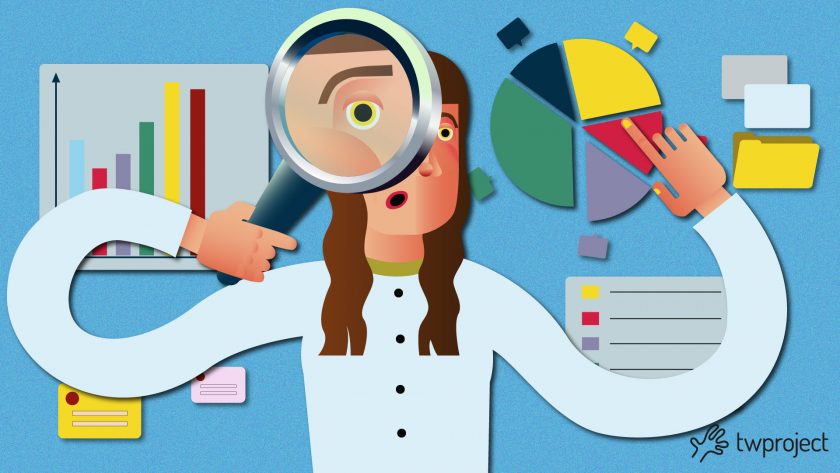Project data analysis has become a core practice in the increasingly competitive world of project management.
The data-driven approach is crucial to improving efficiency, identifying emerging problems, and predicting future trends.
INDICE
Why data analysis is critical in project management
Before diving into details, it would be important to understand why data analysis is crucial in project management.
Project data can provide valuable insights regarding team performance, project progression, and potential obstacles that may arise.
Data analysis allows you to spot problems in advance, improve planning and resource management, and make more informed decisions.
Examples of project data analysis
1. Identify delays
A real-world example of how data analysis can be used in project management would be to identify delays.
Let’s say you are managing a software development project. Using Twproject, you can monitor the time spent completing each task.
If you see that specific tasks require much more time than expected, you might look into them further. The data might show, for example, that some team members are facing technical difficulties or that the workload has not been distributed equally.
2. Forecast necessary resources
Another hands-on example of data analysis is forecasting the resources needed.
For example, let’s say you are managing a project that recurs periodically, such as publishing a quarterly report.
By analyzing data from previous projects, you can predict how many labor hours will be needed to complete the project and how many resources (such as personnel, equipment, or software) must be devoted to it.
This will allow you to plan and ensure you have everything you need to complete your project within schedule.
3. Monitor budget use
And finally, data analysis can help you monitor the use of your project budget. For example, you could use Twproject to track how much of the budget has already been spent and on what.
Consider revising your spending strategy if you notice a particular department burning a disproportionate budget share.
Likewise, if you notice that you are heading toward overspending, you might use the data to identify areas where you can save money.
How to use Twproject for project data analysis
Twproject is a full-fledged project management software that helps teams easily manage and monitor their projects. It offers many features, such as project planning, resource management, task management, risk management, and data analysis.
Let’s take a look at some hands-on examples of how to analyze data with Twproject.
1. Project reports
Twproject offers the option of generating project reports in real-time.
These reports can include information regarding budget, time spent, resources used, risks, and issues.
For example, if you manage a project with a tight budget, you can generate a report showing how much of the budget has been used up to date, so you can forecast if you are likely to go over budget.
2. Workload analysis
Twproject can be used to analyze and balance team workload.
It can show how many hours each team member worked on a particular project, allowing you to identify any disparities in work distribution.
This software provides a comprehensive breakdown of each team member’s activities and assignments, thus helping you see who is overburdened and who can take on more work.
This feature is especially convenient when planning new projects or tasks, allowing you to distribute work fairly and efficiently.

3. Risk management
Risk management is a key element in project management, and Twproject offers a robust system for managing this key element.
It allows for project risk to be identified, tracked, and ranked according to various factors.
With this software, you can assign each risk a probability of occurrence (low to high) and a potential impact on your project (low to high).
This provides a risk matrix that helps project managers focus on the most critical risks.
For example, a risk with high probability and high impact should be closely monitored and addressed with preventive strategies.
On the contrary, a risk that is unlikely to happen and has low probability and low impact may require less immediate attention.
This classification allows risks to be managed more efficiently, saving time and resources and helping to ensure project success.
4. Progress monitoring
Tracking a project’s progress is important to ensure everything goes according to plan.
Twproject offers a range of tools to track and visualize a project’s progress.
For example, the percentage of completion of a specific project or task can be visualized, allowing project managers to understand the project’s progress clearly.
The “Gantt” feature can be used to view the project timeline and monitor the completion of various tasks.
Each task can be tracked regarding completion, time spent, and resources used, providing a comprehensive overview of the project status.
Ultimately, project data analysis is a powerful tool every project manager should use.
Whether trying to identify delays, forecast resource needs, or monitor budget usage, data analysis can provide the information you need to make informed decisions and drive your project to success.



